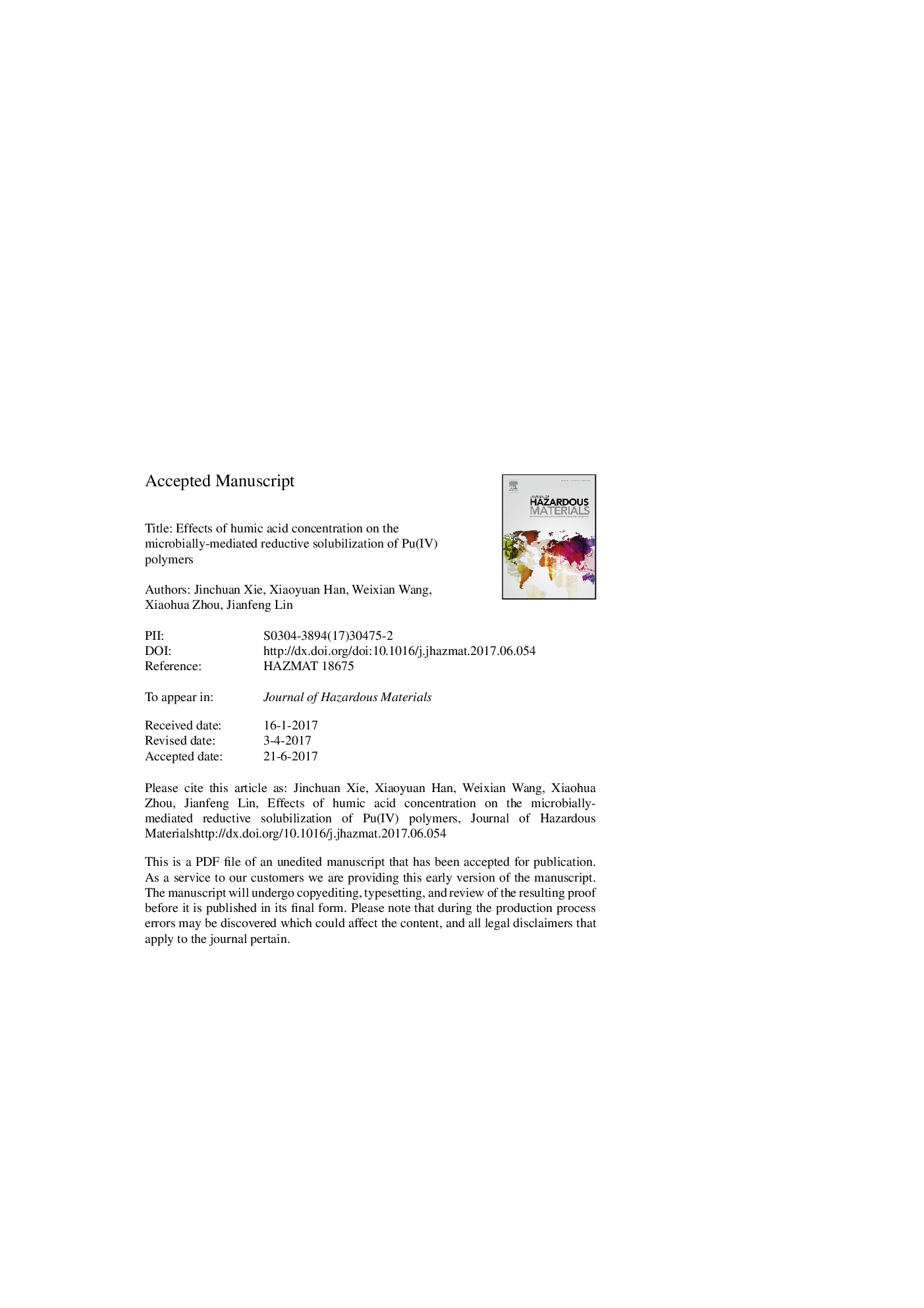| Article ID | Journal | Published Year | Pages | File Type |
|---|---|---|---|---|
| 4979355 | Journal of Hazardous Materials | 2017 | 23 Pages |
Abstract
The role of humic acid concentration in the microbially-mediated reductive solubilization of Pu(IV) polymers remains unclear until now. The effects of humic concentration (0-150.5Â mg/L) on the rate and extent of reduction of polymeric Pu(IV) were studied under anaerobic and pH 7.2 conditions. The results show that Shewanella putrefaciens, secreting flavins as endogenous electron shuttles, cannot notably stimulate the reduction of polymeric Pu(IV). In the presence of humic acids, the reduction rate of polymeric Pu(IV) increased with increasing humic concentrations (0-15.0Â mg/L): e.g., a 102-fold increase from 4.1Â ÃÂ 10â15 (HAÂ =Â 0) to 4.2Â ÃÂ 10â13Â mol Pu(III)aq/h (HAÂ =Â 15.0Â mg/L). The bioreduced humic acids by S. putrefaciens facilitated the extracellular electron transfer to Pu(IV) polymers and thus the reduction of polymeric Pu(IV) to Pu(III)aq became thermodynamically favorable. However, the reduction rate did not increase but decrease with increasing humic concentrations from 15.0 to 150.5Â mg/L. Humic coatings formed on the polymer surfaces at relatively high humic concentrations limited the electron transfer to the polymers and thus decreased the reduction rate. The finding of the dynamic role of humic acids in the bioreductive solubilization may be helpful in evaluating Pu mobility in the geosphere.
Related Topics
Physical Sciences and Engineering
Chemical Engineering
Chemical Health and Safety
Authors
Jinchuan Xie, Xiaoyuan Han, Weixian Wang, Xiaohua Zhou, Jianfeng Lin,
